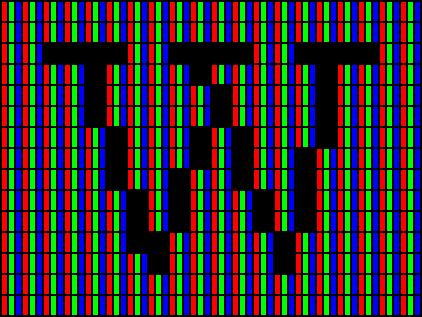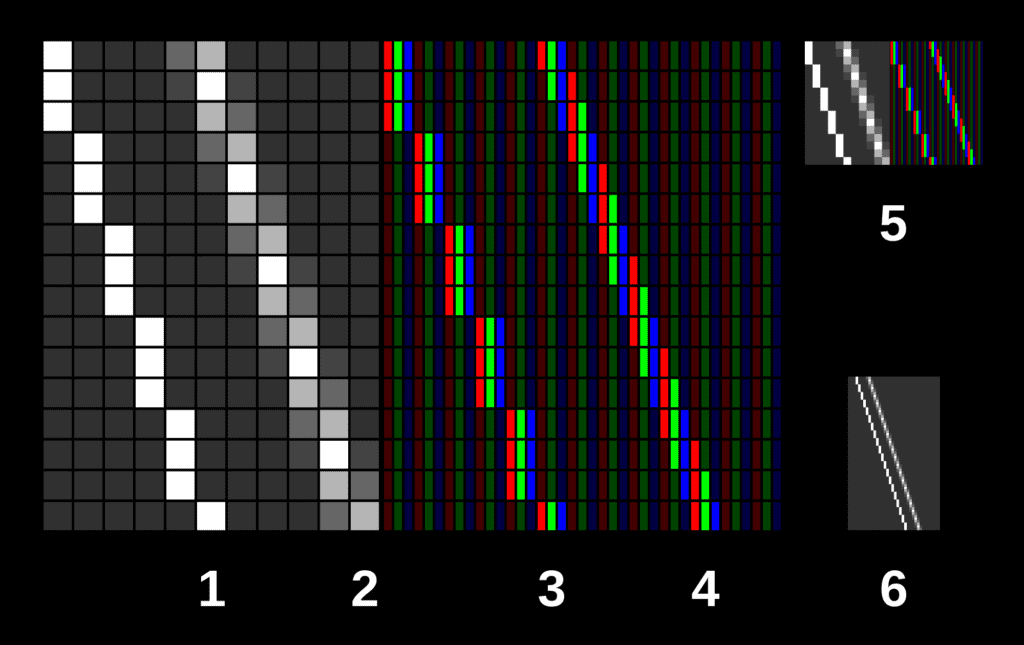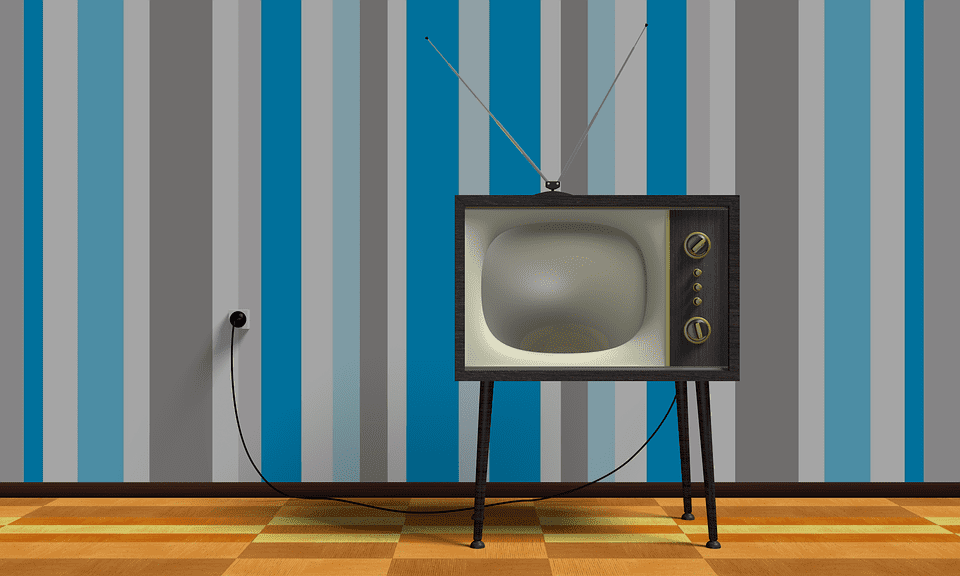University of Central Florida researchers might triple the resolution that LCD screens can pump out by three-fold, virtually overnight. The breakthrough was made possible by a novel surface which allows individual subpixels to display any of the three primary colors.
TVs and every other type of screen have gone a long way since their humble beginnings. But if there’s one thing consumers will always fawn over it’s got to be a bigger, better, crisper display. The first two usually are just a question of how much money you’re looking to spend, while the latter — well, it’s had a hard cap up to now.
One image to rule them all
Think of screens as a reverse compound eye. They build the complete image by stacking lots of tiny images — pixels — together, and by altering each pixel’s color, you alter the final image. In turn, each pixel is built by stacking three tinier images — subpixels — on top of one another. But subpixels are locked to a single color, either red, green, or blue, the three primary colors in television.
A white backlight shines through the subpixels and they’re either turned on or off by a shutter to create the pixel’s final color. For example, if the pixel has to be blue, the LCD shutter will block out the green and red subpixels. If it has to be purple, it will only cover the green subpixel, and so on. Finally, the intensity of the backlight determines the overall brightness of the screen and how light or dark the final color will be.

Simulation of how an LCD renders a Wikipedia’s infamous ‘W’ in black on a white background. No antialiasing.
Image credits Michael Geary.
So far, so good. The LCD has proven itself on our smartphones, computer screens, TVs and more. But because of its dependency on subpixels there’s a limit to how much resolution it can carry over a given surface. So the way to get a better resolution up to now was to just make the screen bigger, making it more expensive and less portable.
To address the limitation, a team from the University of Central Florida’s NanoScience Technology Center went the other way around and made the subpixel smaller — by making them be the pixels. The researchers showed that by using an embossed nanostructure surface and a reflective aluminum surface, they can create subpixels which can change color as needed. So rather than having one green, one red, and one blue subpixel make up a pixel, each subpixel of the “full-colour plasmonic display” can produce the entire range of color that the screen is capable of displaying.
Less is more
Whoa, right? In theory, since each 1/3 of a pixel can now function as a pixel in its own right, the team’s tech can support three times the resolution of a traditional LCD of similar dimensions. Furthermore, each of these tiny pixels will be on unless they have to render black, meaning the screens will be far brighter than traditional LCDs.

Traditional LCD screen displaying a diagonal white line on a black background. Lines 1 and 3 — no antialiasing. Lines 2 and 4 — with antialiasing to make the line smoother, less blocky.
Image credits Devon Fyson / Wikimedia.
One downside, however, is that the screen is a tad limited in regards to frame rate. The display’s cycling times are “are somewhat invariant to voltage and in the 70 ms range, which equates to ∼14 Hz.” While this isn’t slow, it’s just not on even footing with the refresh rates traditional LCDs deliver, and nowhere near what high-end LCDs can churn out. So while it will work well on your phone and for other applications where frame-rate isn’t really an issue, if you want to play a fast-paced computer game it just won’t cut it.
But the technology is still in its infancy and as the team notes, it’s already “orders of magnitude faster than other colour-changing technologies”. Hopefully, these teething problems will probably be addressed in time. If so, it could mean a huge step up in image resolution — and as such quality and fidelity. First, however, the team plans to show that the screens are compatible with current hardware by scaling up their prototype.
“It allows you to leverage all the pre-existing decades of LCD technology. We don’t have to change all of the engineering that went into making that,” said Daniel Franklin, co-author of the paper.
The paper “Actively addressed single pixel full-colour plasmonic display” has been published in the journal Nature.










